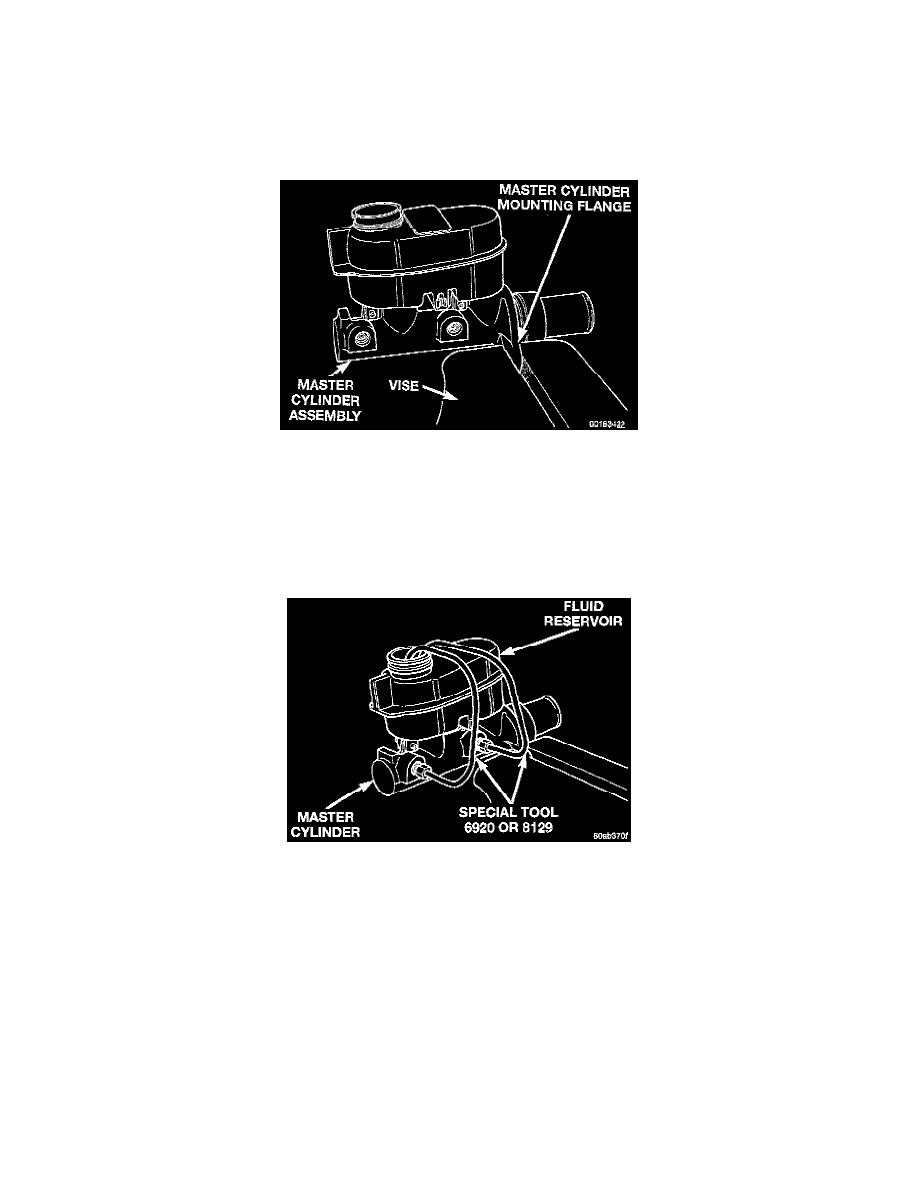Grand Caravan FWD V6-201 3.3L VIN R MFI (1998)

Brake Master Cylinder: Service and Repair
Master Cylinder Bleeding
Bench Bleeding
CAUTION: When clamping master cylinder in vise, only clamp master cylinder by its mounting flange, do not clamp on primary piston, seal boot or
body of master cylinder.
Master Cylinder Mounted In Vise
1. Clamp the master cylinder in a vise using only the mounting flange.
NOTE: Two different size bleeding tubes are used depending on which type of master cylinder the vehicle is equipped with. Vehicles equipped
with traction control use a center port master cylinder with a larger diameter brake tube. Vehicles not equipped with traction control use a
compensating port master cylinder using a standard 3/16 inch diameter brake tube. Be sure the correct size bleeding tubes are used when bleeding
the master cylinder.
Bleed Tubes Installed On Master Cylinder
2. Install the Bleeding Tubes, Special Tool 6920 or equivalent for a non traction control master cylinder or Special Tool 8129 or equivalent for a
traction control master cylinder on the master cylinder. Position bleeding tubes so the outlets of bleeding tubes will be below surface of brake fluid
when reservoir is filled to its proper level.
3. Fill brake fluid reservoir with brake fluid conforming to DOT 3 specifications such as Mopar or an Equivalent.
4. Using a wooden dowel, depress push rod slowly, and then allow pistons to return to released position. Repeat several times until all air bubbles are
expelled from master cylinder.
5. Remove bleeding tubes from master cylinder outlet ports, and then plug outlet ports and install fill cap on reservoir.
6. Remove master cylinder from vise.
7. Install the filler cap from the master cylinder filler neck, on the master cylinder fluid reservoir.
8. Install the master cylinder assembly on the power brake vacuum booster.
NOTE: It is not necessary to bleed the ABS Hydraulic Control Unit (HCU) after replacing the master cylinder. But, the base brake hydraulic
system must be bled to ensure no air is entered the hydraulic system when the master cylinder was removed.
Manual Bleeding
